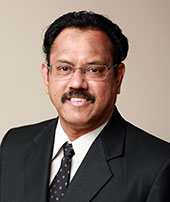Turning Facebook Fans into Product Endorsers
“If you engage customers,” says V. Kumar, “they go and they get their friends” to try out a product, too. Kumar, of the J. Mack Robinson College of Business at Georgia State University, explains how companies can find their most influential online customers and enlist them to help promote their brands.
Topics
Social Business

V. Kumar, J. Mack Robinson College of Business at Georgia State University
One of the more well-known uses of social business is the marketing and market research function, to try to identify influential consumers on social media sites and listen to what they are saying. Some firms have gone a step further and have tried to figure out how those key people can eventually be leveraged to increase sales for the company. But is there a recommended practice for making this really happen?
V. Kumar, the Richard and Susan Lenny distinguished chair in marketing and director of the Ph.D. Program in Marketing at the J. Mack Robinson College of Business at Georgia State University, says he has come up with just such a process.
Kumar, who also serves as the executive director of the College’s Center for Excellence in Brand and Customer Management, coauthored an article about the process in the Fall 2012 issue of MIT Sloan Management Review. “Increasing the ROI of Social Media Marketing” describes how a seven-step framework for social media marketing helped a small ice cream retailer in India achieve higher sales revenue growth rate, social media ROI and brand awareness.
In an interview with MIT SMR contributing editor Robert Berkman, Kumar goes into more detail on the specific steps and methods that worked best for creating “brand ambassadors” from influential consumers. He explains how companies can locate key influencers, how to link these key people to actual brand growth and sales and other lessons he learned along the way.
Why did you choose the topic of social media marketing to research and write about?
First it is a new area. Second, marketers have a very limited understanding of this area. Third, nobody has measured the ROI of investing in this media for campaigns. So these three factors prompted us to get excited about this kind of topic, and a retailer was willing to work with us because this retailer had a limited marketing budget and wanted to try something out. Hokey Pokey, which is a high-end chain of ice cream shops, was willing to give us access to its cash register for our software to monitor the company’s sales.
